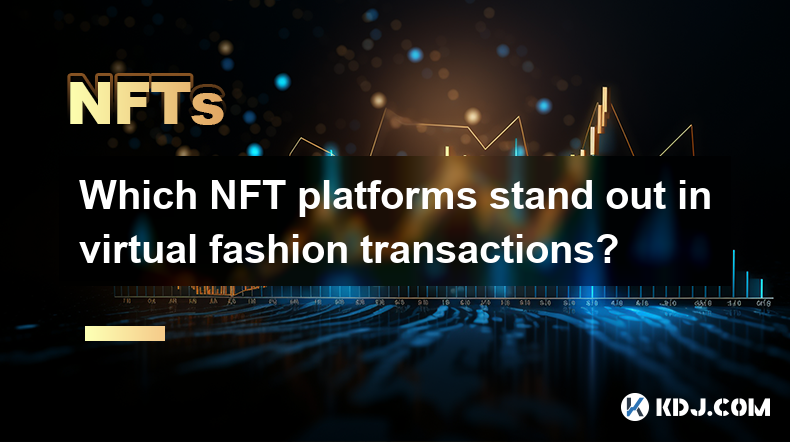-
 Bitcoin
Bitcoin $84,886.7615
-0.14% -
 Ethereum
Ethereum $1,581.5270
-2.65% -
 Tether USDt
Tether USDt $0.9999
0.01% -
 XRP
XRP $2.0882
-2.39% -
 BNB
BNB $582.3082
-0.40% -
 Solana
Solana $127.5462
-1.96% -
 USDC
USDC $1.0000
0.01% -
 TRON
TRON $0.2533
1.94% -
 Dogecoin
Dogecoin $0.1543
-1.49% -
 Cardano
Cardano $0.6062
-2.88% -
 UNUS SED LEO
UNUS SED LEO $9.4099
0.75% -
 Chainlink
Chainlink $12.2075
-1.60% -
 Avalanche
Avalanche $18.9156
-3.41% -
 Stellar
Stellar $0.2350
-1.64% -
 Toncoin
Toncoin $2.8614
-3.37% -
 Shiba Inu
Shiba Inu $0.0...01173
-1.51% -
 Sui
Sui $2.0690
-4.30% -
 Hedera
Hedera $0.1578
-3.19% -
 Bitcoin Cash
Bitcoin Cash $321.2468
-0.91% -
 Litecoin
Litecoin $74.3968
-1.35% -
 Polkadot
Polkadot $3.5397
-1.95% -
 Dai
Dai $0.9999
0.00% -
 Hyperliquid
Hyperliquid $15.7161
0.35% -
 Bitget Token
Bitget Token $4.3529
1.08% -
 Ethena USDe
Ethena USDe $0.9992
0.00% -
 Pi
Pi $0.6075
-7.67% -
 Monero
Monero $217.5058
0.99% -
 Uniswap
Uniswap $5.1384
-3.22% -
 OKB
OKB $51.5691
-0.09% -
 Pepe
Pepe $0.0...07083
-1.23%
Why can NFT be used to sell virtual fashion?
NFTs revolutionize virtual fashion by enabling ownership and authenticity on the blockchain, creating a new market for digital clothing and accessories.
Apr 06, 2025 at 08:08 am

Non-Fungible Tokens (NFTs) have revolutionized the way we perceive and interact with digital assets, particularly in the realm of virtual fashion. NFTs are unique digital tokens that represent ownership of a specific item or piece of content on the blockchain. This technology allows for the creation, sale, and ownership of virtual fashion items in a way that was previously not possible. The ability to prove ownership and authenticity through blockchain technology makes NFTs an ideal solution for selling virtual fashion. This article will explore the reasons why NFTs are well-suited for this purpose and how they are being used in the fashion industry.
What are NFTs and How Do They Work?
NFTs are digital assets that are indivisible and unique, unlike cryptocurrencies such as Bitcoin or Ethereum, which are fungible and interchangeable. Each NFT has a distinct value and cannot be replicated, making it perfect for representing unique items like virtual fashion. NFTs are typically built on blockchain platforms like Ethereum, which provides a secure and transparent way to record ownership and transactions. When someone purchases an NFT, the transaction is recorded on the blockchain, ensuring that the ownership is verifiable and immutable. This technology allows creators to tokenize their digital fashion designs and sell them directly to consumers.
The Unique Nature of Virtual Fashion
Virtual fashion refers to digital clothing and accessories that can be used in virtual environments, such as video games, virtual reality, and social media platforms. These items are often created by designers and artists who want to showcase their work in a digital space. The unique nature of virtual fashion lies in its ability to be worn and displayed in various digital contexts, providing a new avenue for creativity and expression. NFTs enhance this by allowing these digital items to be owned and traded as unique assets, adding a layer of value and exclusivity to virtual fashion.
Proving Ownership and Authenticity
One of the primary reasons NFTs are used to sell virtual fashion is their ability to prove ownership and authenticity. Traditional digital files can be easily copied and distributed, making it difficult to establish who owns a particular item. With NFTs, each token is linked to a specific digital asset on the blockchain, providing a clear record of ownership. This is crucial for virtual fashion, where authenticity and exclusivity are highly valued. By using NFTs, designers can ensure that their creations are recognized as unique and valuable, and buyers can be confident in the authenticity of their purchases.
Creating a New Market for Virtual Fashion
NFTs have opened up a new market for virtual fashion by allowing designers to monetize their digital creations in a way that was not possible before. Traditionally, digital fashion items were often given away for free or sold at a low price due to the ease of replication. With NFTs, designers can set a price for their work and sell it directly to consumers, creating a new revenue stream. This has led to a surge in interest and investment in virtual fashion, as both creators and buyers see the potential for profit and exclusivity. The ability to sell virtual fashion as NFTs has also attracted traditional fashion brands to the space, further legitimizing and expanding the market.
Enhancing the Value of Virtual Fashion
NFTs enhance the value of virtual fashion by adding a layer of scarcity and exclusivity. When a digital fashion item is tokenized as an NFT, it becomes a unique asset that cannot be replicated. This scarcity increases the perceived value of the item, as buyers are willing to pay more for something that is rare and exclusive. Additionally, the ability to trade NFTs on secondary markets allows for the potential for the value of virtual fashion items to increase over time, similar to physical collectibles. This added value makes virtual fashion more appealing to both creators and buyers, driving further interest and investment in the space.
Use Cases of NFTs in Virtual Fashion
There are several notable use cases of NFTs in virtual fashion that demonstrate the potential of this technology. For example, the virtual fashion platform DressX allows users to purchase and wear digital clothing as NFTs. These items can be used in various digital environments, such as video calls and social media platforms, and can be traded on secondary markets. Another example is the collaboration between the fashion brand Gucci and the virtual world platform Roblox, where Gucci released a limited edition digital sneaker as an NFT. These use cases show how NFTs are being used to create new opportunities for virtual fashion and how they are being integrated into existing digital ecosystems.
Challenges and Considerations
While NFTs offer many benefits for selling virtual fashion, there are also challenges and considerations to be aware of. One major challenge is the environmental impact of blockchain technology, particularly the energy consumption associated with proof-of-work blockchains like Ethereum. This has led to calls for more sustainable solutions, such as transitioning to proof-of-stake blockchains. Another consideration is the need for user education, as many people are still unfamiliar with NFTs and how they work. Additionally, there are concerns about the potential for fraud and scams in the NFT market, which can undermine trust and confidence in the technology. Addressing these challenges will be crucial for the long-term success of NFTs in virtual fashion.
The Future of NFTs in Virtual Fashion
The future of NFTs in virtual fashion looks promising, as more designers, brands, and platforms embrace this technology. As the technology continues to evolve, we can expect to see more innovative use cases and applications for NFTs in virtual fashion. For example, we may see the integration of NFTs with augmented reality (AR) and virtual reality (VR) technologies, allowing for more immersive and interactive experiences. Additionally, as the market for virtual fashion grows, we can expect to see more collaboration between traditional fashion brands and digital platforms, further blurring the lines between physical and virtual fashion. The potential for NFTs to transform the virtual fashion industry is vast, and we are just beginning to see the possibilities.
Common Questions About NFTs and Virtual Fashion
Q: What is an NFT and how does it relate to virtual fashion?
A: An NFT, or Non-Fungible Token, is a unique digital asset that represents ownership of a specific item or piece of content on the blockchain. In the context of virtual fashion, NFTs are used to tokenize digital clothing and accessories, allowing them to be owned, traded, and sold as unique assets. This adds a layer of value and exclusivity to virtual fashion, making it more appealing to both creators and buyers.
Q: How do NFTs prove ownership and authenticity of virtual fashion items?
A: NFTs prove ownership and authenticity by recording transactions on the blockchain, which provides a secure and transparent record of who owns a particular digital asset. Each NFT is linked to a specific item, ensuring that it cannot be replicated or duplicated. This allows buyers to be confident in the authenticity of their virtual fashion purchases and ensures that creators can protect their intellectual property.
Q: What are some examples of NFTs being used in virtual fashion?
A: There are several examples of NFTs being used in virtual fashion. One example is the platform DressX, which allows users to purchase and wear digital clothing as NFTs. Another example is the collaboration between Gucci and Roblox, where Gucci released a limited edition digital sneaker as an NFT. These examples demonstrate how NFTs are being used to create new opportunities for virtual fashion and how they are being integrated into existing digital ecosystems.
Q: What are the challenges and considerations associated with using NFTs for virtual fashion?
A: There are several challenges and considerations associated with using NFTs for virtual fashion. One major challenge is the environmental impact of blockchain technology, particularly the energy consumption associated with proof-of-work blockchains. Another consideration is the need for user education, as many people are still unfamiliar with NFTs and how they work. Additionally, there are concerns about the potential for fraud and scams in the NFT market, which can undermine trust and confidence in the technology.
Q: What does the future hold for NFTs in virtual fashion?
A: The future of NFTs in virtual fashion looks promising, as more designers, brands, and platforms embrace this technology. We can expect to see more innovative use cases and applications for NFTs in virtual fashion, such as integration with augmented reality (AR) and virtual reality (VR) technologies. As the market for virtual fashion grows, we can also expect to see more collaboration between traditional fashion brands and digital platforms, further blurring the lines between physical and virtual fashion.
Disclaimer:info@kdj.com
The information provided is not trading advice. kdj.com does not assume any responsibility for any investments made based on the information provided in this article. Cryptocurrencies are highly volatile and it is highly recommended that you invest with caution after thorough research!
If you believe that the content used on this website infringes your copyright, please contact us immediately (info@kdj.com) and we will delete it promptly.
- Just Days After Collapsing More Than 90%, Mantra (OM) Shows Signs of Life – Rebounding 30%
- 2025-04-17 00:35:15
- ZetaChain Expands Its Mainnet to Include Arbitrum, Opening Up Its Features to Over 50 Million New Users
- 2025-04-17 00:35:15
- DWF Labs Expands Operations Into the US Market by Investing $25M in World Liberty Financial (WLFI)
- 2025-04-17 00:30:13
- Bitcoin (BTC) Unrealized Losses Stay Low, Buyer Activity Increased
- 2025-04-17 00:30:13
- The dark side of market-making: How loan option models are being used to rug pull cryptocurrency projects
- 2025-04-17 00:25:15
- FFG Token is scheduled to go live in the coming weeks
- 2025-04-17 00:25:15
Related knowledge

How to combine traditional artworks with NFTs?
Apr 17,2025 at 12:35am
The integration of traditional artworks with Non-Fungible Tokens (NFTs) represents a fascinating intersection of art and technology, offering artists and collectors new ways to engage with and monetize art. This article will explore how traditional artworks can be combined with NFTs, providing a detailed guide on the process, benefits, and consideration...

How to make music or video files into NFTs?
Apr 16,2025 at 10:29pm
Creating music or video files into Non-Fungible Tokens (NFTs) has become an increasingly popular way for artists and creators to monetize their work directly. This process involves converting your digital content into a unique token on a blockchain, which can then be bought, sold, or traded. Here’s a detailed guide on how to transform your music or vide...

What is unique about Shawn Yue’s NFT works?
Apr 16,2025 at 11:22pm
Shawn Yue, a renowned Hong Kong actor and singer, has made a notable entry into the world of non-fungible tokens (NFTs) with his unique artistic creations. His NFT works stand out due to several distinctive features that blend his personal artistic style with the innovative capabilities of blockchain technology. This article delves into the uniqueness o...

Which NFT platforms stand out in virtual fashion transactions?
Apr 15,2025 at 02:29am
In the dynamic world of cryptocurrency and digital assets, Non-Fungible Tokens (NFTs) have carved out a significant niche, particularly in the realm of virtual fashion. As the demand for unique digital wearables and accessories grows, several NFT platforms have emerged as leaders in facilitating these transactions. This article explores the standout NFT...

How does an NFT platform’s cross-chain trading support affect its ranking?
Apr 14,2025 at 04:49pm
The impact of an NFT platform's cross-chain trading support on its ranking is a multifaceted topic that delves into the technical capabilities, user experience, and market dynamics of the platform. Cross-chain trading refers to the ability of an NFT platform to facilitate the exchange of non-fungible tokens across different blockchain networks. This fea...

How does the quality of an NFT platform’s customer service affect its ranking?
Apr 15,2025 at 05:49am
The quality of an NFT platform's customer service plays a crucial role in determining its ranking within the competitive landscape of the cryptocurrency and NFT market. Customer service is often the bridge between a platform and its users, directly impacting user satisfaction, trust, and overall experience. This article delves into how different aspects...

How to combine traditional artworks with NFTs?
Apr 17,2025 at 12:35am
The integration of traditional artworks with Non-Fungible Tokens (NFTs) represents a fascinating intersection of art and technology, offering artists and collectors new ways to engage with and monetize art. This article will explore how traditional artworks can be combined with NFTs, providing a detailed guide on the process, benefits, and consideration...

How to make music or video files into NFTs?
Apr 16,2025 at 10:29pm
Creating music or video files into Non-Fungible Tokens (NFTs) has become an increasingly popular way for artists and creators to monetize their work directly. This process involves converting your digital content into a unique token on a blockchain, which can then be bought, sold, or traded. Here’s a detailed guide on how to transform your music or vide...

What is unique about Shawn Yue’s NFT works?
Apr 16,2025 at 11:22pm
Shawn Yue, a renowned Hong Kong actor and singer, has made a notable entry into the world of non-fungible tokens (NFTs) with his unique artistic creations. His NFT works stand out due to several distinctive features that blend his personal artistic style with the innovative capabilities of blockchain technology. This article delves into the uniqueness o...

Which NFT platforms stand out in virtual fashion transactions?
Apr 15,2025 at 02:29am
In the dynamic world of cryptocurrency and digital assets, Non-Fungible Tokens (NFTs) have carved out a significant niche, particularly in the realm of virtual fashion. As the demand for unique digital wearables and accessories grows, several NFT platforms have emerged as leaders in facilitating these transactions. This article explores the standout NFT...

How does an NFT platform’s cross-chain trading support affect its ranking?
Apr 14,2025 at 04:49pm
The impact of an NFT platform's cross-chain trading support on its ranking is a multifaceted topic that delves into the technical capabilities, user experience, and market dynamics of the platform. Cross-chain trading refers to the ability of an NFT platform to facilitate the exchange of non-fungible tokens across different blockchain networks. This fea...

How does the quality of an NFT platform’s customer service affect its ranking?
Apr 15,2025 at 05:49am
The quality of an NFT platform's customer service plays a crucial role in determining its ranking within the competitive landscape of the cryptocurrency and NFT market. Customer service is often the bridge between a platform and its users, directly impacting user satisfaction, trust, and overall experience. This article delves into how different aspects...
See all articles























































































